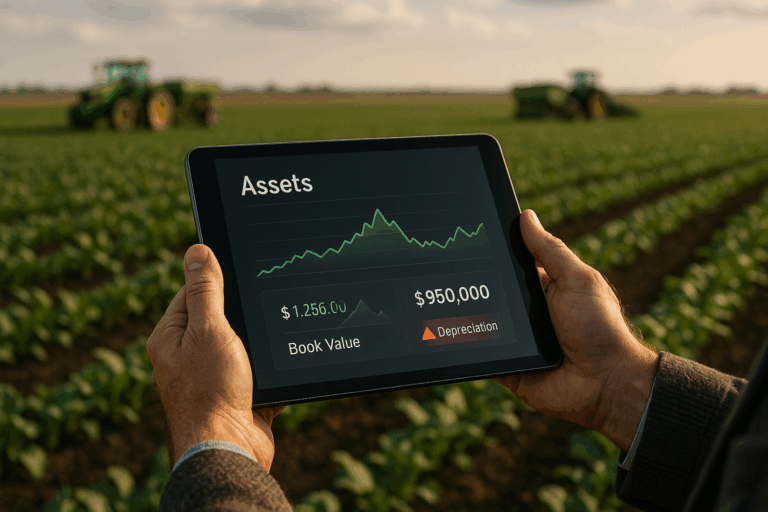Measuring fair value is one the most important accounting concepts. The IFRS-13 framework covers the accounting treatment of fair value measurement.
With the widespread of globalization in the last decades, the organizations have opened ventures in different regions, in spite of lowering tariffs and growth of foreign investors. However, there has been a lack of comparability in the accounting treatment of fair value, as each country follows its own standards and regulatory work. This resulted in hindered investments and transactions.
To assist organizations with the comparability of accounting standards, international standards have been created, aiming to unify accounting standards. The IASB, International Accounting Standards Board, is the body who is responsible for revising and issuing IFRS frameworks.
Table of Contents
ToggleSummary of IFRS 13
IFRS frameworks were created and are used in almost 150 different countries. In this way, essential accounting standards are established for the market. One of its main topics is the accounting treatment of fair value. Fair value is the price the company receives when selling an asset or transferring a liability. This activity involves two parties where neither party benefits nor relates to the current market conditions at the time this transaction takes place.
Initial insights on IFRS 13
On May 2011, the International Accounting Standards Board issued IFRS 13 – Fair Value Measurement to assist countries with the accounting treatment of measuring fair value, as this defines the fair value concept and how to measure it. All the data and information that IFRS 13 presents are essential for users of financial statements. This shows the importance of this IFRS for accounting and its market agents.
IFRS 13 has a well-defined structure of what it should present to its users and how it is set up:
- The definition of fair value on what differs from the general terms
- This presents a conceptual framework on how to calculate fair value;
- This points out supporting evidences
What’s the main objective of IFRS-13?
IFRS 13 has three main objectives that goes as follows:
- Define the fair value concept;
- Establish the accounting treatment of fair value in a single IFRS framework
- Disclose the requirements on fair value measurements and how these should be presented
How to apply IFRS 13 framework?
The application of IFRS 13 is somewhat different from other accounting standards. This is because it should be used when another IFRS requires or allows the application of fair value measurements. However, there are some exceptions to the application of IFRS 13:
- Share-based payment transactions within the scope of IFRS 2 – Share-based Payment;
- Leasing transactions under IAS 17 – Leases;
- Measurements that have some similarities to fair value but are not fair value. For example, the net value included in IAS 2 – Inventories or value in use in IAS 36 – Impairment of Assets;
What isn’t established by IFRS-13?
In the case of payment transaction on recoverable values, the IFRS framework does not address the measurements and disclosure. Neither does the IFRS demonstrates nor establishes the requirements that disclose fair values when they relate to benefits. Nor to retirement plans.
Impairment of Assets
The recoverable value of assets appears in IFRS 13. This value is defined as the value that is greater between the net sales price of the asset and its value in use. If the book value of an asset is greater than its recoverable value, the asset is impaired. Otherwise, there is no devaluation.

How’s the fair value defined by the IFRS 13?
Measuring fair value is a fundamental concept for any organization. According to IFRS 13, the fair value is defined as the price to be received by a company on the sale of an asset. Being the amount to be paid less liabilities, considering an unforced transaction it took place among market participants. And that is when measurement occurs. Thus, fair value can be also called exit value.
This conception of fair value diverges somewhat from its old definition that IAS 39 postulated. In the older concept, fair value is defined as the exchange value of an asset or the liquidation value of a liability.
Other important concepts for IFRS 13
In addition to the fair value definition, the IFRS 13 framework presents the definition of other terms as an active market, exit price, advantageous market, greater and better use. Below presents their definition:
Active market
An active market is one in which transactions that take place with assets or liabilities occur frequently. Thus, they allow for price information to be continuously available.
Exit price
This price is what the company receives when it sells its assets. Or that it acquires when a liability is transferred.
Greater and better use
The term “highest and best use” refers to the use of a non-financial asset by market participants. These will maximize the value of the asset or a set of assets and liabilities, but always by considering them within the use of the asset.
More advantageous market
When a market is more advantageous, it means that it enhances the price that you would receive when selling an asset. Or that this market minimizes the amount one would pay to pass on the liability. However, the market considers transaction and transportation costs in its final amount.
Main Market
Finally, the core market, as the name suggests, is the sector that contains the highest capacity and activity level for the assets or liabilities.
Fair Value Hierarchy Levels
There are several ways to measure and disclose fair value. So to expand the density and comparability of these measurements, IFRS 13 created a fair value hierarchy. This hierarchy is responsible for categorizing the value entries by means of evaluations on three levels.
However, there are some rules for prioritizing this concept. The hierarchy prioritizes prices that do not match in the market for assets or liabilities, only they need to be identical. The lowest priority is for data that cannot be observed.
If the hierarchy refers to the data that measures this value, it can be categorized into different hierarchical levels. So that the estimation of this value will be categorized in its entirety.
Level 1
Level 1 is characterized as the prices that active markets quote for their identical assets or liabilities. Companies are able to access these values at their measurement date to obtain reliable evidence for the fair value.
Level 2
The second level shows other than the prices that the market quotes and that fall under level 1. Whether they are direct or indirect.
Level 3
The inputs that have level 3 are those that are unobservable, either for assets or for liabilities. As far as fair value is concerned, it uses this unobservable data in its measurement if observable data is not available.
How to measure Fair Value?
IFRS 13 addresses the calculation of fair value. The company has to build same assumptions as to the other market participants. With that, the conditions can be verified where the assets and liabilities should be correctly priced, considering the risks and assumptions.
When calculating the fair value, one shall estimate the price at which an unforced transaction of an asset / liability sale would take place considering the market components and conditions at the exact time of this measurement.
In order to be able to properly measure fair value, a company must determine:
- What is the asset or liability being measured;
- For a non-financial asset, the appropriate valuation assumption for the measurement is important;
- The main market;
- The valuation techniques considered for the calculation. However, one needs to consider the availability of data and the fair value hierarchy level.
What are the requirements of the IFRS-13 to measure fair value?
There are some requirements in IFRS 13 to calculate the fair value of each asset, liability, or a group of both. Therefore, a manager needs to consider some characteristics of the assets and liabilities to determine this type of value. After all, he will be able to find this value by comparing his data with that of other companies in the market.
- Restrictions on use or sale;
- Location;
- Historical data of assets and liabilities;
- Condition.
Learn about the approaches that can be used to measure fair value
An entity will always use valuation approaches to the circumstances. When collecting data, it must be enough for the fair value measurement to take place. These approaches shall maximize the use of relevant observable data and reduce the use of unobservable data.
The valuation approach shall provide an approximate calculation of the price at which an unforced transaction to sell an asset or transfer a liability would occur under current market conditions.
Market-based Approach
This approach considers prices and any relevant information that is generated by market transactions. These must involve identical or comparable assets and liabilities. Besides a group of assets and liabilities.
Cost-based Approach
The cost approach considers the replacement cost of the asset.
Income Approach
The income approach is responsible for converting future cash flows, revenues or expenses into a single, discounted present value. Thus, this method shows what the market’s expectations are regarding the future values of this company.
With more than a decade of market experience in the area of fixed asset advisory, the CPCON group has deep experience and technical knowledge over the accounting treatment of fixed assets to determine their fair value and perform useful life studies.



























